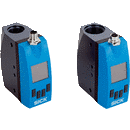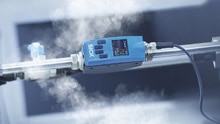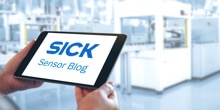Generating compressed air consumes large quantities of electricity, making it one of the most expensive resources used in production. The sharp rise in energy prices seriously affects companies, including one of our customers that produce beverages. Their production and filling lines consume large quantities of energy-intensive compressed air. To reduce consumption and cut costs, they installed SICK’s compressed air monitoring solution: the FTMg flow sensor in combination with the cloud solution in the Field Analytics portfolio and the TDC gateway. Now they can identify and eliminate leaks and inefficiencies, use data to better understand their processes, base energy-use decisions on data analysis, and make production more sustainable.
Compressed air monitoring solution delivers energy savings and cuts costs for bottling plant
In the past, the beverage company carried out manual checks to identify and reduce compressed air leaks. This involved inspecting the equipment in every stage of production, from the manufacturing of the bottles and filling of beverages all the way to packaging and palletizing. Altogether it was a time-consuming and costly affair, often performed on weekends. They wanted an efficient digital monitoring system that meets DIN EN ISO50001 requirements.
From manual to automated monitoring through collaboration
SICK took a holistic approach to optimizing the compressed air energy management in the bottling plant. They proposed a three-component continuous monitoring solution comprising the FTMg flow sensor, the TDC Gateway, and the cloud solution in the Field Analytics portfolio.
Holistic digital solution saves time and resources, with potential for scalability
Shifting from time-consuming and labor-intensive manual inspections to a digital continuous monitoring solution was a game changer. There is now 24/7 data visualization, complete with specific alarms indicating potential leakages and inefficiencies. By comparing consumption data from each measuring point, machine, and production line, cost drivers or over-consumption can be identified. For example, by comparing the same machine type with the same function in two different lines. And if other production sites are added in future, comparisons across plants are also possible. Continuous monitoring of individual equipment items and the plant as a whole gives a clear overview that draws on statistics, trends and KPIs. Equipped with advanced evaluation powered by analytics, the right tools are in place for efficient maintenance planning, measurable cost savings, and data-based profitability calculations.
Data visualization designed for specific usage
There was a close collaboration between SICK and the beverage company, which was crucial to the success of this project. The team of the beverage company provided process knowledge and offered constructive feedback throughout the project. In this way the customer was able to be actively involved in the development of the solution, which provides an optimal visualization of the relevant compressed air consumption data and a transparent cost calculation.
Compressed air savings in numbers
According to an initial analysis, the project delivered annual savings of close to €60,000 on 1 million m³ of compressed air. A second automatic analysis yielded an additional savings potential of 0.5 million m³ – and that’s only for downtimes. But there’s even further savings potential if dynamic leaks are considered.
Going forward, the SICK continuous monitoring system will be used to continuously optimize individual machines based on hard data and analysis, will help cut downtimes and service costs, and will improve the carbon footprint with a more efficient production.









